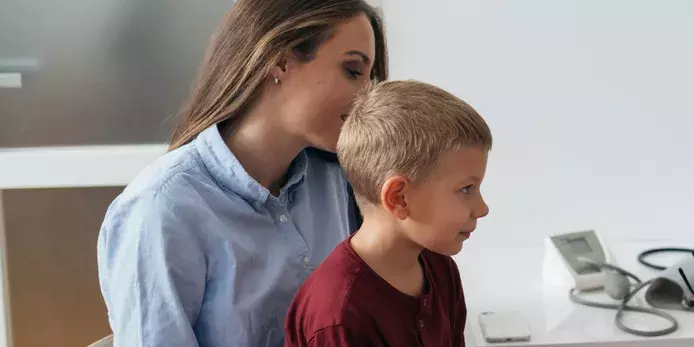Innocence revisited – 28

Dr Audra Barclay recalls several incidents that have highlighted the value of observation.
Look before you leap
I learnt this lesson as a medical student during a clinical short case in my final-year paediatric examination. I recall walking hesitantly into an outpatient cubicle.
‘Examine this child’s abdomen’, said one of two examiners who were sitting at the desk. The examiners who determined my fate were always smiling to themselves, downing the end of their lunch, sharing jokes with the patients – and failing me.
The child, aged about 6 years, was sitting on his mother’s lap, holding my future and a red toy car in his hands. I attempted the ‘set-up-rapport-with-6-year-old’ routine, which I must confess was not a great mental leap for me at the time.
‘What’s your name?’ I asked, my eyes begging him to tell me. No answer but no tears, so things were going well. Anyway, I knew the drill: ‘Inspect first, palpate later’.
I stood back from the boy and allowed the examiners to watch me watch him. Even in later years, this clinical foreplay was absolutely essential to pass postgraduate exams. I stood there counting to 10, which I thought would probably be equivalent to a thorough inspection.
Next I began gently to pry off the boy’s T-shirt. He was playing along, despite my shaking hands and dilated pupils: caffeine tablets play havoc with your health, but I had needed to read an entire semester’s paediatric notes the previous night.
The mother was pleasant but clearly on the examiners’ side; however, she did help me to remove her son’s T-shirt.
The boy held his ground; he didn’t talk, but he didn’t cry, which I thought a fair state of events until I realised that he was not going to leave his mother’s lap. I would have to examine his abdomen while he was sitting.
I was filled with alarm. I had not been confident of success since I entered the room, but examining an erect abdomen would really reduce my chances of a pass.
Consciously trying to avoid hyperventilating, I placed my hand on the boy’s abdomen. Despite my anguish the process appeared to be painless for the young lad. Suddenly I thought I felt a mass. I was elated – I had found it. But I didn’t know what it was – I was depressed. I rollercoastered.
I stayed as outwardly calm as hysteria would permit, and tried to palpate above and below the mass. I couldn’t tell if it moved with respiration.
‘Done?’ said the examiner who was the chattier of the two. He had finished his lunch and wanted to go out and grab a coffee.
NO, I screamed to myself.
‘Yep’, I said confidently.
I took my time, joking with the child and helping him to put his T-shirt back on. It’s funny how that T-shirt sticks in my mind even today: grey with white writing, ‘A’ something or other, ‘L’ and some scrawl about leukaemia and an appeal…oh…Thank you, mum. I smiled warmly at the kind mother who had been so helpful throughout the examination.
‘Well?’ said the other examiner; apparently he too had eaten his fill.
I presented my findings: ‘On examination the child looks well. The most outstanding feature on abdominal examination is splenomegaly, at least twice normal size. I would need to examine the patient lying down to determine a more accurate measurement and to confirm what appeared to be a tippable liver’. (A little embellishment never harmed anyone.) Suffice to say, my best mark that year was in paediatrics.
Look no further
Throughout my career, I have been astounded by the information gained on inspection. Little do patients know how often their practitioner has a good idea what is wrong with them as they walk in through the door.
During my hospital residency I found inspection especially useful during night shifts. The blue lipped, confused elderly man, who wouldn’t let me near him because he recognised that I was an escaped alien from Hangar 18 (how he saw through my cover, I’ll never know), took his nebuliser and almost immediately improved. And every doctor has diagnosed acute pulmonary oedema on entering a darkened room, with the tachypnoeic, gurgling, wide-eyed patient spotlighted by the bedlamp.
I recall an aggressive young man who had suffered a head injury and would not let anyone near him. An astute surgical registrar quietly said, ‘cerebral irritation’. Sedation, a CT scan and surgery quickly followed.
An extremely unwell 26-year-old mother appeared on the doorstep of the accident and emergency department, hypotensive with a purpuric rash. Fortunately, her GP had given her a shot of penicillin while calling an ambulance, which without doubt made possible her survival from disseminated meningococcal infection.
Perhaps not as dramatic, but certainly as useful, a recent Christmas card from one of my patients showed micrographia. His new dementia is related to Parkinson’s disease, not Alzheimer’s as I had initially suspected…Sometimes you need look no further for the diagnosis. MT
